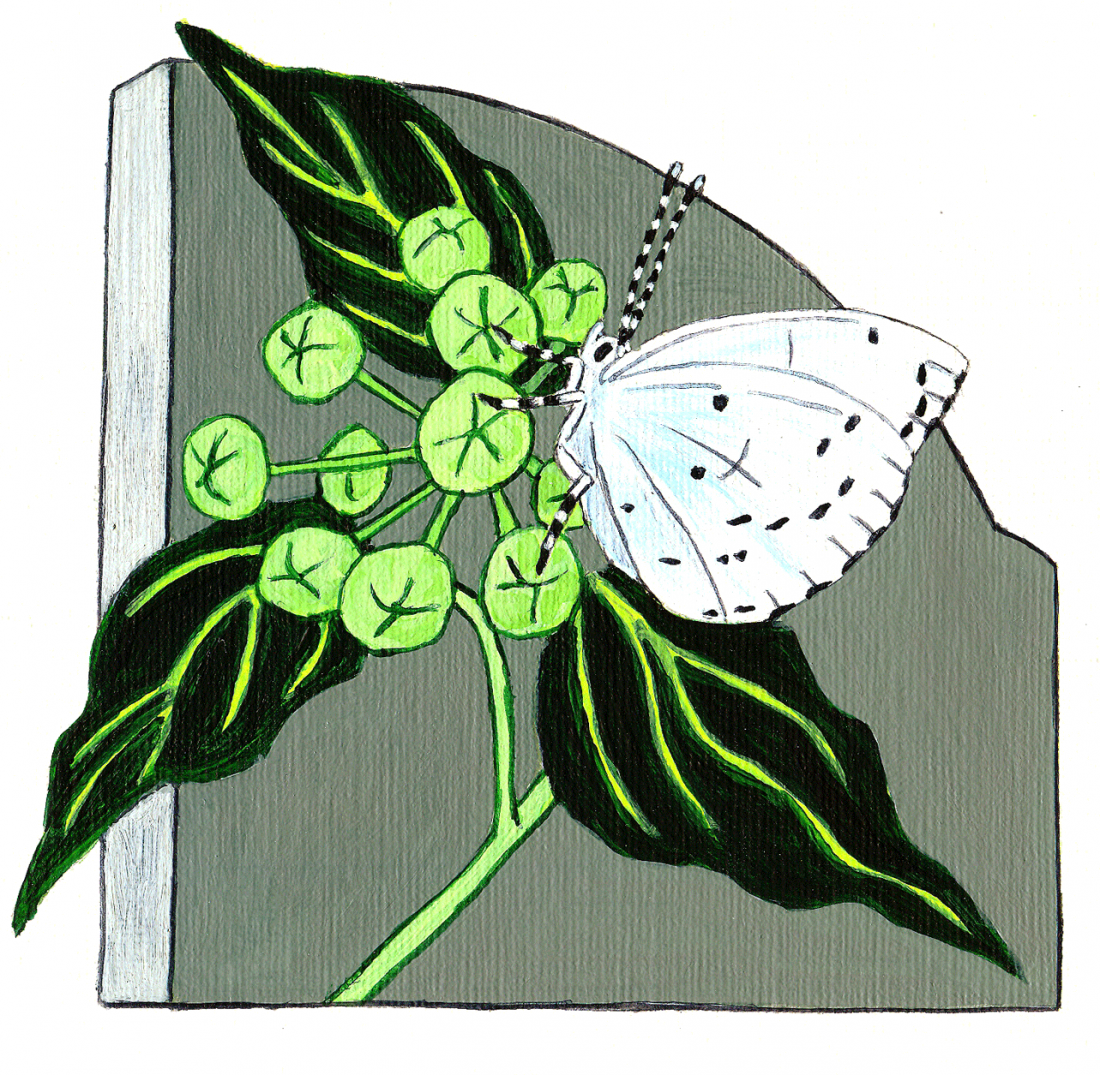Fungi
“From dead plant matter to nematodes to bacteria, never underestimate the cleverness of mushrooms to find new food!” Paul Stamets.
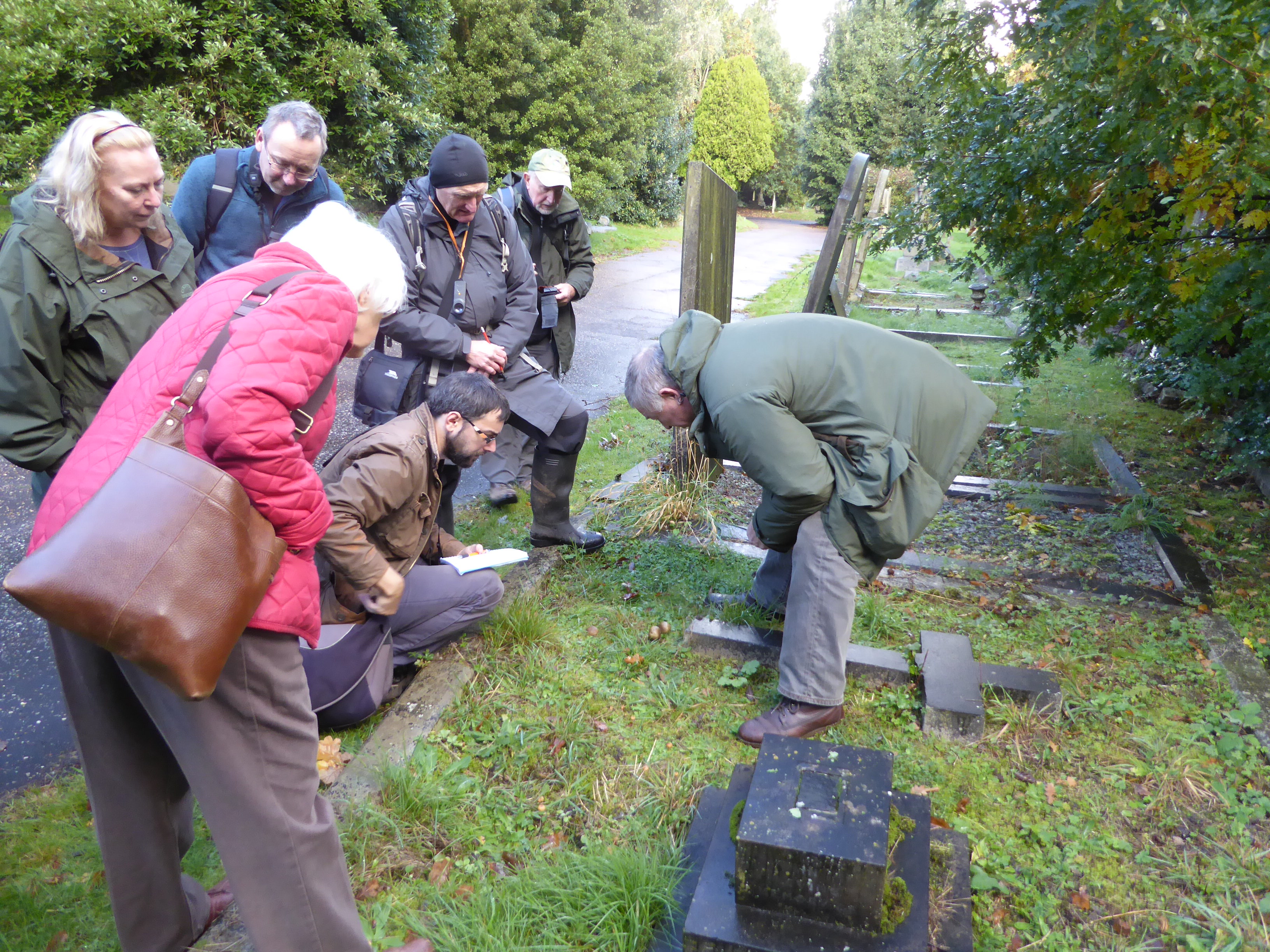
Fungal foray with Norfolk Fungus Study Group
Earlham Cemetery has an impressive number and variety of fungi, many associated with the Cemetery’s trees and grassland.
The grass in Earlham Cemetery has never been “improved” (treated with artificial fertilisers). This makes the Cemetery a good place to see important grassland fungi, such as Waxcaps.
Many fungi growing in grassland are associated with particular trees, such as the Fly Agaric, whose underground mycelia are connected to the roots of Birch trees.
Some fungi live on dead, rotting wood, such as Plums and Custard, which grows on old tree stumps. Honey Fungus (of which there are several closely related species) is common in Earlham Cemetery. It is a parasite of living trees, but will continue to live on the dead wood once the tree has been killed.

Parrot Waxcap
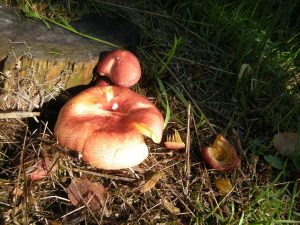
Plums and Custard, Tricholomopsis rutilans
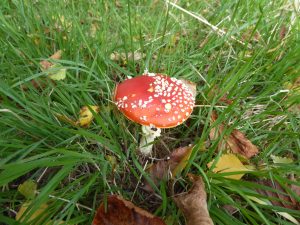
Fly Agaric, Amanita muscaria
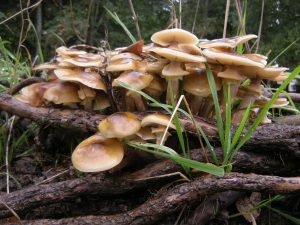
Honey Fungus on a tree stump
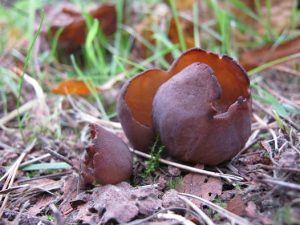
Toad’s Ear, Otidea bufonia
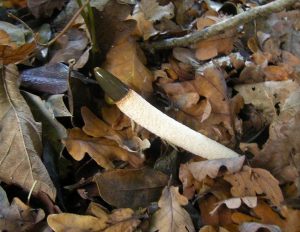
Dog Stinkhorn, Mutinus caninus
Fungi also occur on plant leaves and stems, including many species of Rust fungi, Target Spot on Ivy leaves and, one of the most noticeable, Tar Spot fungus on Sycamore leaves.
Fungi also grow on fungi. Every autumn, large fairy rings of Clouded Funnel mushrooms appear in the Cemetery and sometimes these are host to the Piggyback Rosegill, another mushroom that feeds on the decaying Clouded Funnel beneath it.
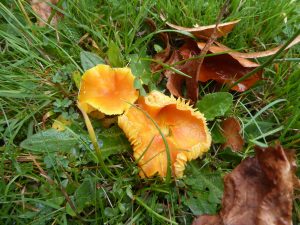
Meadow Waxcap, Cuphophyllus pratensis

Striated Earthstar, Geastrum striatum
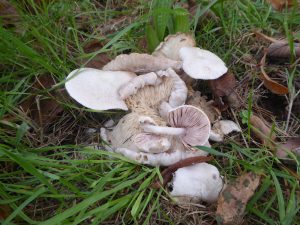
Piggyback Rosegill, Volvariella surrecta
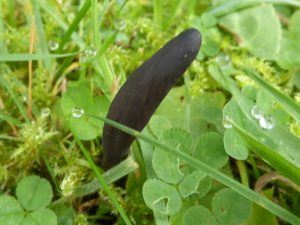
Earthtongue, Geoglossum sp.
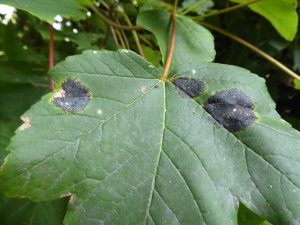
Tar Spot, Rhytisma acerinum, on Sycamore
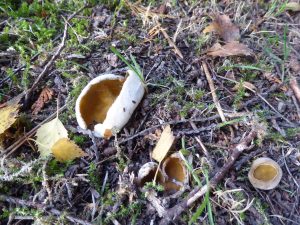
Sowerbyella radicata
If you want to learn more about the fungi of Earlham Cemetery, join our group and come along on one of our fungi walks in October or November. We also hold joint forays in the Cemetery with Norfolk Fungus Study Group every few years.
